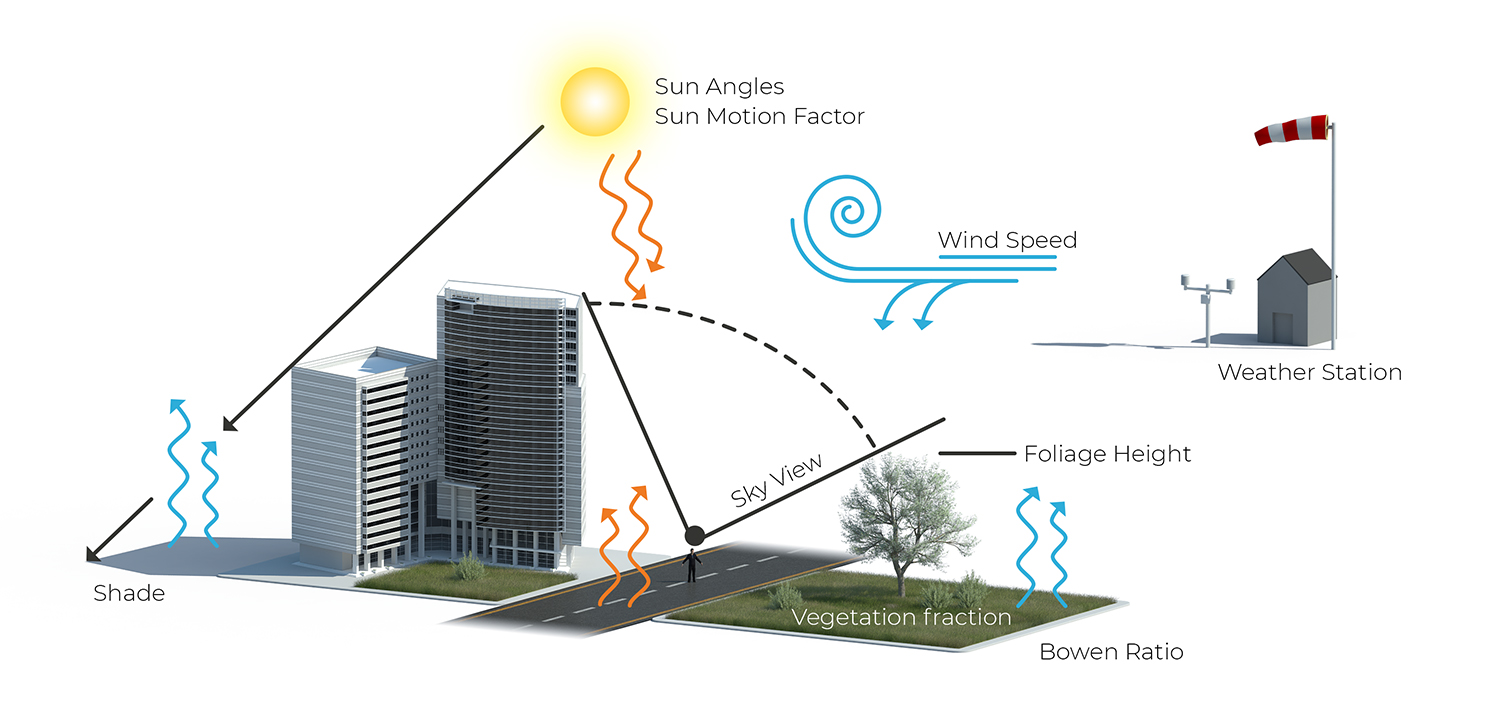Heat Module overview: Difference between revisions
mNo edit summary |
No edit summary |
||
| (3 intermediate revisions by 2 users not shown) | |||
| Line 51: | Line 51: | ||
* [[Getting started (Heat Overlay)]] | * [[Getting started (Heat Overlay)]] | ||
* [[Heat Overlay Wizard (Heat Overlay)]] | * [[Heat Overlay Wizard (Heat Overlay)]] | ||
* [[Calculation models and formulas (Heat Overlay)]] | |||
<!-- | <!-- | ||
| Line 84: | Line 85: | ||
* Buildings with [[Function|functions]] related to foliage. The [[Foliage_height_calculation_model_(Heat_Overlay)|foliage height calculation model]] will determine the foliage height using the height of the vegetation (as buildings) and the foliage crown factor attribute; | * Buildings with [[Function|functions]] related to foliage. The [[Foliage_height_calculation_model_(Heat_Overlay)|foliage height calculation model]] will determine the foliage height using the height of the vegetation (as buildings) and the foliage crown factor attribute; | ||
* Areas with as foliage height attribute, defining the foliage height for a whole area; | * Areas with as foliage height attribute, defining the foliage height for a whole area; | ||
* [[ | * [[GeoTIFF]], defining a foliage height value for each cell in its raster. | ||
\ | \ | ||
--> | --> | ||
{{ | {{HeatOverlay model attribute nav}} | ||
Latest revision as of 09:28, 2 March 2023
The DPRA Heat Module for the Heat Overlay can be used for heat stress calculations, based on geographical features and locale parameters. The final result is the physiological equivalent temperature, which is a measure of temperature which takes into account factors which can change the experience and effects of temperature.
The module performs these calculations in accordance with the DPRA Heat stress report.
Input factors
The calculation of the Heat Stress Overlays takes into account:
- Meteorological circumstances such as:
- Spatial situation, such as:
- Land use, for fraction vegetation and rate of evaporation (Bowen ratio).
- Terrain, foliage and building heights
Calculation of Physiological Equivalent Temperature
To calculate the Physiological Equivalent Temperature (PET), we first have to determine which formula (sun or shade/night) should be used. It is selected by:
- Day or night? Determined by the sun altitude angle;
- Is a cell shaded? Calculated by the shade calculation model;
PET sun
The following factors influence the Physiological Equivalent Temperature for locations directly in the sun:
- The atmospheric temperature, calculated by the atmospheric temperature formula;
- The hourly global radiation from the sun, supplied as weather station data;
- The wind speed at 1.2 meter above ground, calculate by the wind speed calculation model;
- The Wet-Bulb temperature, calculated by the Wet Bulb temperature formula;
- The sun altitude, calculated automatically based on the project area, date and time of day;
- The Bowen ratio, an attribute obtained from Buildings or Terrain on that specific location;
- The sky view factor, calculated by the sky view factor calculation model.
PET shade and night
The following factors influence the Physiological Equivalent Temperature for locations directly in the shade or at night:
- The atmospheric temperature, calculated by the atmospheric temperature formula;
- The wind speed at 1.2 meter above ground, calculate by the Wind speed calculation model;
- The Wet-Bulb temperature, calculated by the Wet Bulb temperature formula;
- The sky view factor, calculated by the sky view factor calculation model.
- The diffuse radiation, calculated by the diffuse radiation formula.
Required information
In order to configure the Heat Overlay accurately additional data needs to be loaded in:
- Date(s) and time of day. Also multiple consecutive days can be used. Each day-hour combination will become a result.
- Daily weather station data
- Hourly weather station data
- Foliage heights (although a means of estimation is available)
See also
- Getting started (Heat Overlay)
- Heat Overlay Wizard (Heat Overlay)
- Calculation models and formulas (Heat Overlay)





